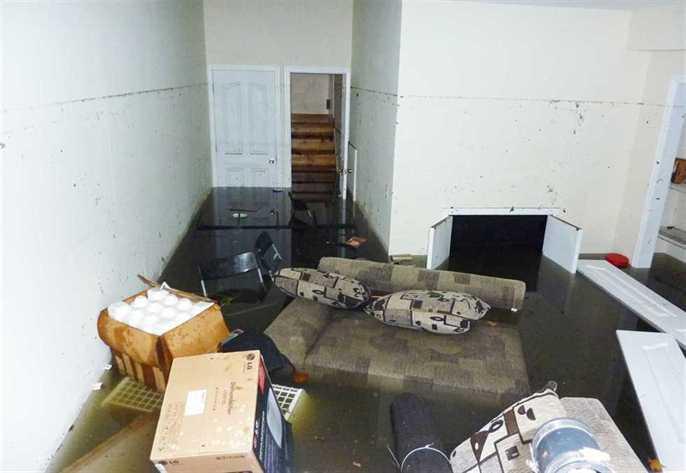
Basement flooding is among the most unpleasant things a homeowner can experience. The best way of handling a basement flood is to prevent it from happening in the first place. Most insurers won’t cover basement flooding, so you risk losing time and money to a basement flood. After having followed our tips, if you’re still worried about basement flooding, consider moving your valuables away from your basement.
First, take a look at your yard. Some yards slant towards the foundation – that’s a big no-no. When water pools toward your foundation, it pretty much has to leak into your basement. Your lawn should slope gently away from your home; too big of a slope and water will drain onto city streets, which is against regulations.
Next, it’s important to look at the protective measures you have installed in your home. Every house in Winnipeg should have a weeping tile, sump pit, and sump pump. Pits and pumps are actually required by the city for any homes built after 1990. Older homes should be retrofitted to include sump pits and pumps.
The system is simple – the weeping tile gathers water that would have pooled near your foundation and diverts it towards the sump pit, essentially a big hole in your basement. Once that pit starts to fill with water, the pump activates, pushing that water away from your home.
You need to make sure your sump pump is draining properly – when the pump drains too closely to your home, the water can accumulate near the foundation. Conversely, when the pump drains too far from your home, the water can end up on the city streets. That, again, is against the rules – the city doesn’t want sewers to become overwhelmed with storm water.
Those of you who don’t have a properly working sump pump should call about our Winnipeg plumbing services. A sump pump that breaks down is no use to you at all; what’s worse, your sump pump may be broken without you knowing it. This can lead to some very unexpected basement floods. Test your sump pump by pouring a bucket of water into the pit. We can also handle preventive maintenance for you by checking on your sump pump yearly when spring comes around.
The condition of your home will also influence how likely your basement will flood. Improperly cleaned gutters and eavestroughs may allow water to pour over the sides. Cracks in your foundation can make it easier for water to get into your home. When the pipes leading away from your gutters point towards your home, or aren’t angled properly, water might accumulate near the foundation.
